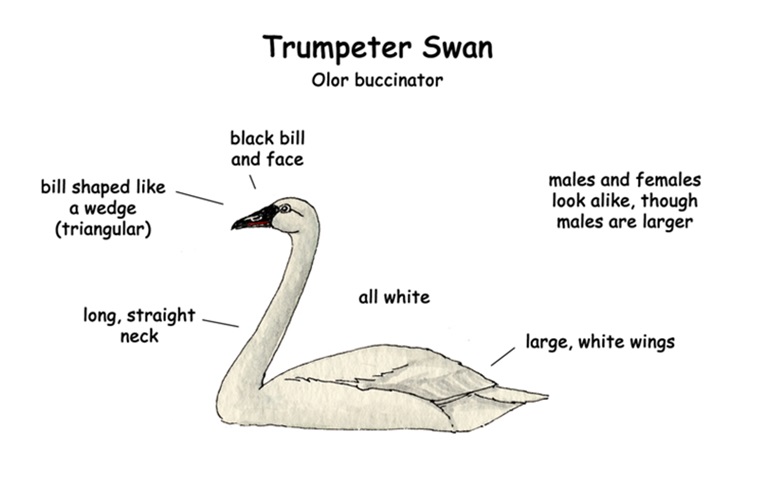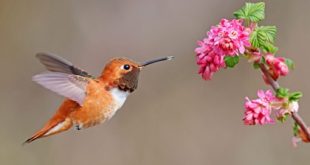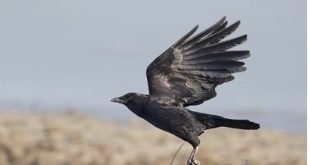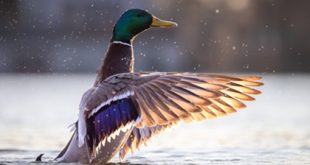Swans, known for their grace and elegance, are among the most iconic birds found in freshwater habitats around the world. Their physical characteristics are specially adapted for life in water and on land. Each body part of a swan plays a critical role in its survival, movement, feeding, and reproduction. Let us explore the key body parts of a swan and their respective functions.
A Body Parts Of Swan

1. Head
The head of a swan is streamlined and proportional to its body, contributing to its elegance. The head houses essential sensory organs such as the eyes, ears, and beak.
Functions:
- Eyes: Swans have sharp eyesight, which helps them locate food underwater and detect predators from a distance. Their eyes are positioned on the sides of their head, giving them a broad field of vision.
- Ears: Though not externally visible, swans have ears located just behind their eyes, covered by feathers. Their hearing is acute, allowing them to detect sounds in their environment, crucial for communication and predator awareness.
- Beak (Bill): The beak of a swan is uniquely adapted for foraging. It is flat and broad, with serrated edges that help filter food such as aquatic plants, insects, and small fish from water.
2. Neck
One of the most distinctive features of a swan is its long, graceful neck, which is comprised of around 22 to 25 vertebrae—more than most other birds.
Functions:
- The long neck allows swans to reach aquatic plants growing deep underwater, making them efficient feeders.
- It enhances their field of vision, as they can raise their heads high to survey their surroundings.
- During courtship displays, the neck plays a significant role in performing elegant and synchronized movements with their mate.
3. Body
The body of a swan is large, oval-shaped, and covered with dense feathers. It is designed to provide buoyancy and insulation in water.
Functions:
- Feathers: The feathers are water-resistant due to natural oils secreted from a gland near the base of the tail (uropygial gland). This ensures that swans remain dry and warm even in cold water.
- Buoyancy: The lightweight, hollow bones and air sacs in their body help them stay afloat.
- Energy Storage: The body also stores fat reserves, which provide energy during migration or periods of scarce food availability.
4. Wings
Swans have large, powerful wings with a wingspan that can range from 2 to 3 meters, depending on the species.
Functions:
- Flight: Swans are capable of long-distance flight. Their strong wings allow them to migrate between breeding and wintering grounds, often covering thousands of kilometers.
- Communication: During displays of aggression or courtship, swans spread their wings to appear larger and more intimidating or to attract mates.
- Protection: Wings can be used as a defensive tool to fend off predators or rival swans.
5. Legs and Feet
Swans have relatively short legs positioned towards the rear of their body and webbed feet that are well-adapted for swimming.
Functions:
- Swimming: The webbed feet act like paddles, propelling the swan efficiently through water.
- Steering: They use their feet to steer while swimming and maintain balance in the water.
- Walking: Although not as adept on land, their legs enable them to move short distances to nest or graze on grasses near the shore.
- Nesting: Swans use their legs and feet to collect and arrange nesting materials such as twigs and grasses.
6. Tail
The tail of a swan is short and pointed, typically held slightly upward. It consists of stiff feathers.
Functions:
- Steering: The tail aids in steering while swimming.
- Balance: It helps the swan maintain stability during swimming and flight.
- Preening: Swans use their tails to access and spread oil from the uropygial gland across their feathers, ensuring they remain waterproof.
7. Uropygial Gland
Located near the base of the tail, the uropygial gland is a small yet vital part of the swan’s anatomy.
Functions:
- Waterproofing: The gland secretes an oily substance that swans spread over their feathers while preening, making them water-resistant.
- Feather Maintenance: This oil also keeps the feathers flexible and reduces wear and tear.
8. Beak Knob
In some species, such as the mute swan, there is a prominent black knob at the base of the beak, especially pronounced in males.
Functions:
- Identification: The size of the knob helps distinguish between males and females, with males generally having a larger knob.
- Mating Displays: The knob may play a role in courtship and signaling reproductive fitness to potential mates.
9. Internal Organs
While not visible externally, a swan’s internal organs play crucial roles in its survival and overall functioning.
Functions:
- Heart: Swans have a large, efficient heart that supports their active lifestyle and long-distance flights.
- Lungs and Air Sacs: Their respiratory system is highly efficient, providing oxygen for sustained energy during flight.
- Gizzard: Like other birds, swans have a gizzard that grinds up food, aiding digestion.
10. Plumage (Feathers)
Swans are covered in dense, white plumage (or occasionally black, as in black swans). The plumage is not only aesthetically striking but also serves various practical purposes.
Functions:
- Thermal Insulation: The dense feathers trap air, providing excellent insulation against cold water and harsh weather.
- Camouflage: The plumage color often blends with the surrounding environment, especially in snowy or aquatic settings, helping swans avoid predators.
- Flight Dynamics: The arrangement of feathers on the wings reduces air resistance and maximizes lift during flight.
Conclusion
The anatomy of a swan is a marvel of nature, perfectly tailored for its aquatic lifestyle and migratory habits. From the graceful neck that allows it to forage underwater to the powerful wings that enable it to travel vast distances, each body part serves a distinct and essential purpose. Understanding the functions of these body parts not only deepens our appreciation of swans but also highlights the intricate ways in which animals are adapted to thrive in their environments. Swans embody the perfect balance between form and function, making them a true wonder of the avian world.


